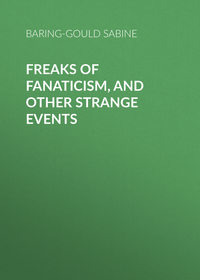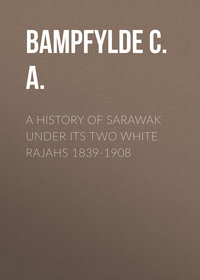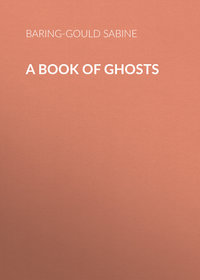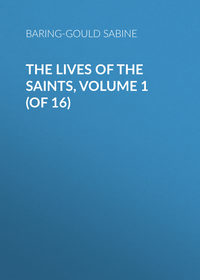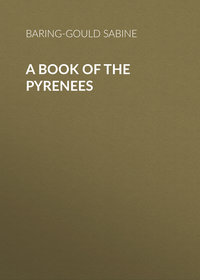 полная версия
полная версияStrange Survivals
A middle-aged man declared to the parson of his parish that he had seen and spoken with the Almighty. He was asked what He was like. He replied that He was dressed in a black swallow-tailed coat of the very best broadcloth and wore a white tie. This was said with perfect gravity, and with intense earnestness of conviction. His highest conception of the Deity was that of a gentleman dressed for a dinner party. Anyone who has had dealings in spiritual matters with the ignorant will be able to cap such a story. This is not to be taken as laughing matter, but as a revelation of a condition of mind to us scarcely intelligible. I feel some hesitation in repeating the incident, but do so because I do not see in what other way I can make those who have not been in communication with the very ignorant understand the full depth of their ignorance.
Now let us look at the ideas that those of a low mental condition among the savage races have relative to their idols. I will take the instance of the Ostjaks and Samojeds. The latter have their Hakes. They are figures – sometimes only bits of root of tree or wood that have a distant resemblance to the human form, or some unusual shape. Every family has its Hake– sometimes has several. These are wrapped up in coloured rags, given necklaces and bangles, and a tent or apartment to themselves. They have their own sledge, the haken-gan, and following after a Samojed family, on its journey from one camping place to another, may be seen a load of these unsightly dolls in their sledge. If some figure out of the usual, in wood or stone, attracts general attention, and is too big to be carried about, it is regarded as the hake of a whole tribe. These images are provided with food. Family affairs are communicated to them, and they are supposed to rejoice with domestic joys, and lament family losses.
When their help is required, offerings are made to them, but if the desired help be not given, the hake gets scolded, refused his food, and sometimes is kicked out into the snow. The face of the hake, or what serves as face, is smeared with reindeer blood. It is the same with the Ostjaks. Their idols are dressed in scarlet, furnished with weapons, and their faces smeared with ochre. They are called Jitjan. “Often,” says Castrén, “each of these figures has its special office. One is supposed to protect the reindeers, another to help in the fishery, another to care for the health of the family, etc. When need arrives, the figures are drawn forth and set up in a tent at the reindeer pastures, the hunting or fishing grounds. They are presented with sacrifices now and then, which consist in smearing their lips with train oil or blood, and putting before them a vessel with fish or meat.”26
It is very much the same thing with the negro, who stands on the same intellectual level as the Siberian savage. His fetish is anything out of the way – a strangely-shaped stone or bit of bone, a bunch of feathers, a doll, anything about which his imagination may work, and his reason remain torpid.
I have watched a little boy of six play with a piece of ash twig. I drew it, and noted what his proceedings were. He had picked up this twig, and suddenly exclaimed, “I have found a horse. It is lying down. Get up, horse! Get up!” He took it to some grass to make it eat, then went with it to a pond, and made it drink. There the twig fell in, and he cried out that the horse was swimming. I picked out the twig for him. Presently, by throwing it into the air, he found that his horse could fly. Finally, he set to work to build a stable, and furnish it for his horse.
I had been reading Castrén’s account of the hakes and jitjan at the time, and under my eyes was a child doing with a bit of stick exactly what a Turanian nomad of full age does now, and has done for thousands of years. In two or three years this boy’s mind will have expanded, and his reason have got in the saddle, and will hold in the imaginative faculty with bit and bridle, and then he will cease to see horses in ash twigs; but the wanderers on the Asiatic tundras have never got beyond the stage of an English child of six and never will.
I quote a passage from “The Beggynhof; or, City of the Single,” to show how that it is possible for a tolerably-educated, religious Belgian of the present day to stand at the same point as that of a child of six, and of an Ostjak savage.
“St. Anthony is a favourite saint with the good, holy, simple-minded Beguines; but woe betide him if he refuse his powerful intercession. I once saw a poor little statuette of this domestic saint left outside on the window-sill when the snow lay deep on the ground. On inquiring why it did not occupy its place on the mantelshelf, I was told that the saint had been refractory; that the Beguine who occupied that room had been very patient and forbearing for some days, but that, finding gentleness had no effect in obtaining what she wanted, she now thought herself justified in trying what effect punishment would have, so she had turned the effigy of the rebellious saint out into the snow, and sat with her back towards it, that her patron might understand she did not intend to address him again until he granted her his protection and influence.”27 Precisely in like manner, when Germanicus died, did the rabble of Rome pelt the temples and statues of the gods with mud and stones, because they had failed to hear their prayers for the recovery of their beloved prince.
We all of us pass through this stage of intellectual and spiritual growth, except a few who never get beyond it. It is said of the negro that as a child he is clever and bright, but that he never attains the mental condition of an European of fifteen. But there are men and women among us who, in certain matters, never get beyond the condition of mind of a child of six. We may be shocked at this, but we cannot help it; they are so constituted – something in their cranial structure, or some natural deficiency in mental vigour is the occasion of this. In religious matters they cannot get beyond Fetishism; and if we deny them that, we deny them all religious comfort and worship. Sometimes, through some accident, a leg or an arm gets diseased, whereas the rest of the body grows; so is it with the mind – certain faculties get diseased, perhaps the reasoning power, and then the imagination runs riot.
To an ordinary cultured Pagan of Rome, or Greece, or Egypt, idolatry was impossible. The gods, figured in marble and bronze, were to them symbols and nothing else, precisely as to us the letters of the alphabet are symbols of certain sounds, and the pictographic characters of cuneiform and hieroglyphic writing were anciently symbols of certain ideas. So also idolatry is absolutely impossible to anyone who has gone through the elements of modern education. Religious statues and pictures are historic representations of personages and events in the sacred story, but to look upon them with the eyes of an Ostjak or a child of six is a psychological impossibility, except only for such as are mentally stunted like the Beguine of Ghent. It is, therefore, without the smallest scruple that we can employ imagery in our churches, knowing that the possibility of misusing it is gone past reversion to it in nine hundred and ninety-nine persons out of a thousand, and that the thousandth person who would misuse it is incapable of any other religious exercise, and it were better that he had some religious conceptions, however low these were, than none at all.
To draw this moral has not been my object in penning this article, but to direct the attention of the intelligent to the nursery, and show them how that the elements for the study of primitive culture, the means of following the development of ideas in man are to be found wherever there are little children.
VIII.
Revivals
Of the three factors that go to make up man – body, intellect, and the spiritual faculty, the last has been allowed somewhat to fall into neglect in the present age, when special stress has been laid on the education and development of the intellect. Nevertheless it is a factor that must not be ignored, and it is one that is likely to revenge itself for neglect by abnormal action.
In the Middle Ages it was the reverse; under the preponderating influence of the Church, the spiritual faculty was cultivated to extreme of mysticism, and the intellect on one side, and the body on the other, hardly received sufficient recognition. When an ascetic would neither think out a problem nor keep himself clean, he exhibited a monstrosity, not as repulsive, but as certainly a monstrosity, as one of the gladiators depicted on the pavement of the Baths of Caracalla – this latter, a man cultivated to the highest point of animal strength and physical activity. It is probable that a purely intellectual man without idealism, without religiosity, is as much a monster as either of the other, though not in the nineteenth century as repugnant to us as they are.
A religion that is good for anything must not only be one that is intelligible and reasonable, but must satisfy the spiritual cravings, and also exercise moral control over the animal nature. At the same time, it is liable to undue stress in each direction; it may become a mere theological speculation, mere mysticism, or resolve itself into exterior formalism. Whenever it manifests a preponderating tendency in one or other of these directions – the element in man that is not given its adequate scope will revolt, and fling itself into an opposite scale.
The function of the reason in religion is to act as the balance wheel of the spirit. Reason is not the mainspring, not the motive power of religion; it is its controlling, moderating faculty.
Throughout the history of mankind we are coming continually upon phenomena of a spiritual nature, outbursts of the spiritual faculty in strange and often in very repulsive manifestations, and it may not be amiss to look at some of these and to learn what is their real nature.
Among the primitive races which at this day represent the earliest phases of psychological development, the savage man has a vague apprehension of the existence of a spiritual world, haunted by the souls of the dead which have not been absorbed into the universal spirit from which they emanated. He has no definite belief, he has only an apprehension. In the spiritual world, the existence of which he suspects, there is no system; concerning it he has no doctrine. Its existence implies no responsibilities.
Even the idea of an all-pervading spirit is inchoate. All that man is confident about is that he is surrounded by and subject to the influences of spirits, now beneficent, then malevolent, always capricious, that have to be humoured and propitiated, and that allow themselves to be consulted.
There is but one, so to speak, natural mode of holding intercourse with the spirits, and that is by ecstasy, whether natural or superinduced by narcotics. The man who falls into hysterics, the man who is cataleptic, is the natural priest. An hysterical, a cataleptic condition, is not understood, and just as the unusual and contorted bit of wood or stone receives reverence as a fetish, so does the man subject to unusual fits become a priest. To him the man of less nervous organism applies when he desires to hold intercourse with the unseen world. Incantation, whereby the hysterical work themselves into hysteria, and religious rite are one. The Shaman or Medicine-man is the only priest.
Indeed, there is not a people, at a low stage of mental and moral development, among which this phase of religion is not found, before the spirit world coagulates into distinct beings, the rudiments of a theology appear, the priesthood emerges as a caste, and worship is fixed in ceremonial observance.
As man advances in the scale of general culture, and thinks more of the unseen world, his reason or fancy, or reason and fancy acting together, become creative; in the protoplastic, nebulous spirit-world points of light appear, the light is divided from the darkness, and the spiritual entities take rank, and assume characteristics. Religion enters on the polytheistic phase.
At the same time the moral sense has advanced; it has seen that there is some relation between the two worlds determined by good and bad. An ethic code is evolved, imposed on man by the superior beings in the world unseen.
But whilst some of the more gifted in a generation attain to this religious and moral conception, there remain others, at the same time, unable to rise, who still occupy the same low level as the earlier men, who are conscious of spiritual forces, but unable to differentiate them, who are lost in a vague dream, incapable of accepting a theologic system, and unwilling to submit to moral restraint. Such men will always turn away from a definite creed, view a priestly caste with suspicion, and kick against an ethical code. To them the Schaman is still the only priest, and delirious ecstasy the only sacrament that unites the worlds. Their psychic development is so rudimentary, that they are ready to accept as consecrated whatever utterance is vented, whatever act is performed in the transport of temporary delirium.
Before proceeding any further with the account of the growth of religion, it will be well here to give an account of Schamanism as it at present exists. For this I will quote a description given by Lieutenant Matjuschin who accompanied Baron Wrangel on his Polar Expedition in 1820-3. Lieutenant Matjuschin visited a Tungu Schaman near the Lena, in 1820.
“In the midst of the gurte (hut) burnt a fire, round which was laid a circle of black sheepskins. On this the Schaman paced, uttering his incantations in an undertone. His black, long, coarse hair nearly covered his dark-red face; from under his bushy eyebrows gleamed a pair of glowing bloodshot eyes. His kirtle of skins was hung with amulets, thongs, chains, bells, and scraps of metal. In his right hand he held his magic drum, like a tambourine, in his left an unstrung bow. By degrees the flame died away; he cast himself on the ground; after five minutes he broke out into a plaintive muffled sound like the moans of several voices. The fire was fanned into a blaze again. The Schaman sprang up, planted his bow on the earth, rested his brow on the upper end, and ran at a rapidly increasing pace round the bow. Suddenly he halted, made signs with his hands in the air, grasped his drum, played a sort of melody on it, leaped and twisted his body into strange contortions, and turned his head about so rapidly that it seemed to us more like a ball attached to the trunk by a string. All at once he fell rigid on the ground; two men whetted great knives over him, he uttered his mournful tones, and moved slowly and convulsively. He was forced upright, and he was as one unconscious, only with a slight quiver in his body; his eyes stared wildly and fixedly out of his head, his face was covered with blood, which poured out with sweat incessantly from his pores. At last, leaning on the bow, he swung the tambourine hastily, clattering over his head, then let it fall to earth. Now he was fully inspired. He stood motionless with lifeless eyes and face; neither the questions put to him, nor the rapid unconsidered answers he gave, produced the slightest alteration in his frozen features. He replied to the queries, of the majority of which he can have had no comprehension, in an oracular style, but with great firmness of assurance. Matjuschin asked how long our journey would last? Answer, ‘Over three years.’ ‘Would we effect much?’ ‘More than was expected at home.’ ‘Should we all keep our health?’ ‘All but you; but you will not be really ill?’ (Matjuschin suffered for a long time with a wound in the throat.) ‘How is Lieutenant Anjou?’ ‘He is three days distant from Bulun, where he has taken refuge, having barely saved his life from a frightful storm on the Lena.’ (This was afterwards found to be true.) Many answers were so vague and poetical as to be unintelligible. When we had done questioning him, the Schaman fell down and remained a quarter of an hour on the ground suffering from violent convulsions. ‘The devils are departing,’ said the Tungu, and opened the door. Then the man awoke as out of a deep sleep, looked about in a bewildered manner, and seemed unconscious of what had taken place.
“At another place a Schaman went into ecstasies. The daughter of the house, a Jakutin, became white, then red, then the bloody sweat broke out, and she fell unconscious on the ground. Matjuschin ordered the Schaman to desist; as he did not, he flung him out of the house, but he continued his leaps and contortions outside in the snow. The girl lay stiff, the lower part of her body swelled, she had cramps, shrieked, wrung her hands, leaped and sang unintelligible words; at last she fell asleep, and when she woke after an hour, knew nothing of what had happened. Her father told us she often had these ecstasies, foretold the future, and sang in the Lamutisch and Tungu languages, which she did not know.”
Matjutschin remarks on what he saw: “The Schamans have been represented as being mere gross deceivers; no doubt this is true of many of them, but the history of others is very different. Born with ardent imaginations and excitable nerves, they grow up amidst a general belief in the supernatural. The youth receives strong impressions and desires to obtain communication with the invisible world. No one teaches him how to do so. A true Schaman is not a cool and ordinary deceiver, but a psychological phenomenon.”
These hysterical transports are infectious. Several cases have been known where a Schaman has begun his operations, that onlookers have been convulsed, have communicated their agitation to others, and it has run through an entire settlement, all becoming frantic, shouting, rolling on the ground, with nervous jerks of the head and spasms of the body.
We find precisely analogous practices everywhere among men on the same psychological platform as Lapps, Ostjaks, and Tungus. Sometimes medicinal plants and drugs are used to provoke intoxication or excite dreams.
Madness, epilepsy, catalepsy, hysteria, in fact all nervous maladies are at present little understood by science, and among rude nations, where there is no science, are not understood at all, and are regarded with superstitious terror. The violence of the patient, the fancies that possess him, his incoherent cries, the distortion of his body, the alteration in his features, all seem to point out that he has fallen under the domination of a foreign power, and such a person is said to be possessed. His actions, his words, are no longer his own, but those of the spirit that occupies his body. There was not of old, nor is there still among savages, any sharp distinction between good spirits and bad. All spirits are those of the dead. It is only by those who have advanced to a higher stage that these are classified as angels or devils. In Baron Wrangel’s “North Polar Travels,” already quoted, is another significant passage which illustrates this point. He says that in Northern Siberia an epidemic disease called the Mirak appears, which, according to the universal belief of the people, proceeds from the ghost of a dead sorceress entering into and tormenting the patient. But Wrangel says, “The Mirak appears to me to be only an extreme form of hysteria; the persons attacked are chiefly women.”
Our word mania traces back to the period when the madman was supposed to be possessed by the manes, the spirit of some dead man; but such an idea was already abandoned by the classic Roman, who gave the word to us.
As already said, it was inevitable that Schamanism should co-exist along with an organised religion, for only one portion of a people would have made sufficient progress to be able to receive a dogmatic faith and accept a formulated worship. There would always remain a substratum of ignorance and unintelligence which would have recourse to diviners and dealers with familiar spirits, that is to Schamans or medicine-men. And now we can understand the true position of the Witch of Endor. The faith of the Jewish people had taken shape; it had its monotheistic creed, its altars, and its priesthood, but the religious development of the people was not on a level with the scheme of Mosaism. The law was formal, unspiritual – that is to say, unsensational – to those to whom the only religion that was acceptable was one of vague spiritualism and ecstatic hallucination. Saul himself was one of these. As long as all went well with him he adhered to the authorised religion, but the moment he was in real distress and alarm he had recourse to the baser, proscribed system, level with his own low spiritual perceptions.
All the denunciations in the Old Testament against witchcraft are properly denunciations not of devil worship, but of a relapse from the highly organised faith, to the inchoate form of religion suitable only for savages, from which the Divine Revelation had lifted the sons of Israel. We find precisely the same condition among the Greeks. They had their temples, their priests, their mythology. But this was beyond the spiritual range of some, and these had recourse to the Goetoi, true Schamans, that took their title from the cries they uttered. These Goetoi were, in fact, the successors of the medicine-men of pre-historic Hellas. They were looked upon with mistrust and some fear by the superior, cultured classes, and laws were passed, but always evaded, prohibiting these men from exercising their functions, and the people from having recourse to them.
Superstition has been called the Shadow of Religion. It may be so regarded, as it always dogs its steps; but a more exact and philosophic view of superstition is to regard it as the protoplasm of belief, co-existing alongside with fully articulated religion, as the jelly-fish floats in the same wave where the vertebrate-fish swims. Superstition is the pap of religion to those incapable of digesting and assimilating a solidified creed. To those low in the psychic scale there is a consciousness of spirit; but spirit must be vague, and the means of holding communion with spirit must be something that appeals to their coarse, uneducated fancy, as hysteric convulsions or maniacal ravings.
The Gospel was preached to Jew and Gentile, and a change came over the face of the religious world. Religion was carried into an infinitely higher sphere. Christianity stood above classic Paganism, as classic Paganism stood above Schamanism.
Let us take a passage from the history of the Church in Apostolic times, and we shall see the reappearance of the same phenomenon.
During the course of his second missionary journey, St. Paul came to Corinth, and abode there eighteen months, during which time he laboured to spread the Gospel. He addressed himself first to the Jews residing in Corinth, but roused so great an opposition that he turned to the Greeks, and succeeded so well in gathering about him a crowd of persons who made profession of conviction, that the Jews seized and dragged him before Gallio, the Roman proconsul, accusing him of opposition to the law of Moses. But the Governor put the whole matter from him, as one out of his jurisdiction, if not beneath his notice. Shortly after St. Paul departed to Syria by ship.
It is worth considering the quality of the converts made at Corinth, that we may understand what followed. Corinth, the capital of Achaia, was noted for its wealth and luxury. It was the place for the performance of the Isthmean games, in which boxing, horse-racing, and musical contests formed the great attraction. It was the Newmarket of Greece, and swarmed with those doubtful characters, of low intellect and depraved morals, who generally congregate about the race-course, the boxing-ring, and the music-hall. The heathen orator, Dio Chrysostom, who lived at the same time as St. Paul, says of Corinth that it was verily the most licentious of all the cities that ever were, and that ever had been.
It was to the people of such a city that St. Paul addressed himself, and amongst whom he met with a certain amount of success. He tells us himself to what class the bulk of his converts belonged. There were “not many wise men after the flesh,” that is, very few of the philosophers, the only representatives of a higher life and clear intelligence, the only men who struggled after a knowledge of God, and for pure morality. They stood aloof. There were also “not many mighty,” few in authority; “not many noble,” few of the respectable citizens. In fact, he got his converts from the riff-raff of an utterly vicious town. We must bear this in mind.



